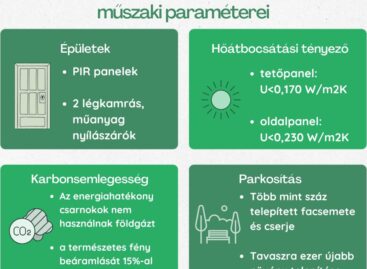Condiment brands are looking for new communication elements
On the stagnating condiment market the volume share of private labels has reached 38 percent, hypermarket strengthened its position among retail channels and the 301-500 g packaging size increased its market share – these are the main trends uncovered by a Nielsen survey. István Bacskai, commercial manager with Koch’s Torma Kft. told our magazine that when switching to private label products, consumers give up buying branded mayonnaise first, followed by branded mustard and horseradish. Krisztián Lőkös, Univer Product Zrt.’s product category manager found it important to mention that strong manufacturer brands like Univer could become even stronger during the crisis.
According to Nielsen, the ketchup category expanded by 12 percent in the past two years – above the average in the premium and private label segments. József Schalbert, regional trade and marketing director with Heinz CET informed us that ketchup consumption in restaurants fell, but a part of consumers were buying more and better quality products in retail units. Krisztián Lőkös stressed the importance of added value, for instance manufacturing products that are free of preservatives – an aspect Univer never loses sight of. When innovating, Heinz’s main consideration is to guarantee high quality and safe products.
According to József Schalbert, one of the company’s priorities in innovation is organic products: Heinz Bio ketchup is already available in two hypermarket chains. More convenient packaging is another way forward and the ‘top-down’ cap solution of Heinz ketchup and mayonnaise bottles is a perfect example of this. What is more, the bottle is made from PET so the product has become lighter and more environmentally friendly than before. István Bacskai told our magazine that Koch’s innovation activity is based on three basic principles: tradition (traditional recipes and flavours), health (as low a level of preservatives in their products as possible) and specialty (pleasing customers who are open to new things, for instance with their wasabi horseradish). Melinda Hegyi, Unilever Hunagry’s category operations assistant manager opined that consumers are looking for quality and traditions, so the success of their 40-year old Delikát8 product is constant.
At the same time the grill season will also bring back an old favourite, their Globus Kertész salad dressing. Univer’s product selection an be divided into four main groups: Hungarian, Flavours, Univer Flavours, salad dressings and table sauces. In the first half of the year, the latter was expanded with new flavours and products got a new, modern packaging. Their new promotion, ‘The Devils of the Kitchen’ focuses on barbecues and grilling. In stores ‘Bogrács-displays’ call shoppers attention on the promotion. Heinz primarily focuses on the ketchup category on the Hungarian market too. Due to the moderate level of grill sauce consumption, they do not plan to introduce new products for the grill season.
The company keeps focusing on POS tools in its communication. Products with the brand name Koch’s represent international flavours and it is the company’s Kiskunfélegyházi brand that serves special Hungarian taste. Last year the company launched its recipe sharing website, www.izekszimfoniaja.hu. Koch’s is convinced that tasting session are very important, because consumers can give direct feedback.
Related news
Related news
After a subdued year, the holiday season is strong
74% of online shoppers, around 3.1 million people, are preparing…
Read more >Battle of the regions: these are the most popular dishes according to Hungarians
Five times the national average of Mexican food is consumed…
Read more >Business-tailored halls help SMEs develop and grow
RaktárAD, a logistics developer with a Belgian-Hungarian ownership background, has…
Read more >



